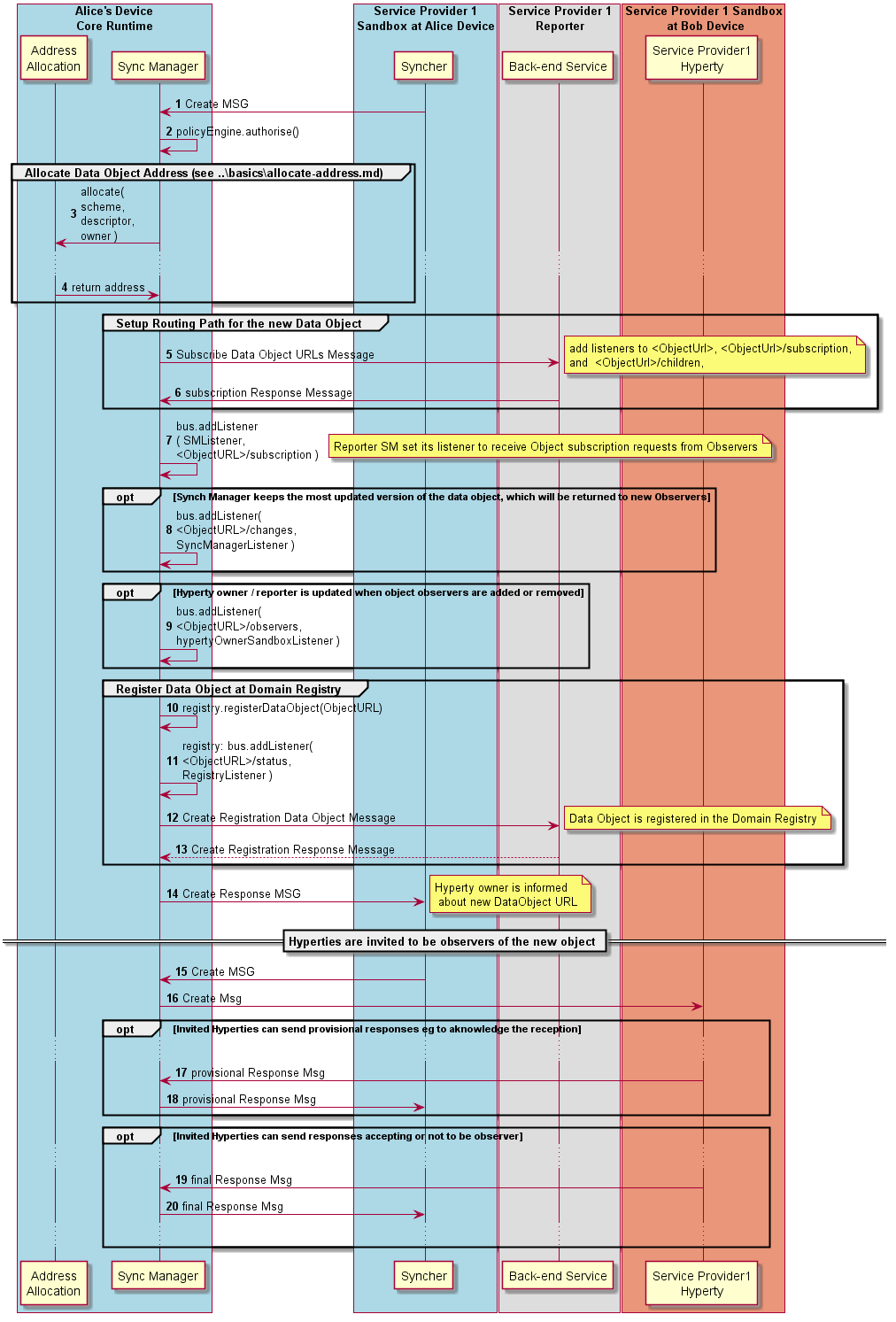Data Object Creation
This MSC diagrams shows the most relevant steps to support the setup of data object synchronisation.

Steps 1-2 The Data Object reporter post a Create Message to initiate the setup of the Data Object synchronisation. The Core Police Engine applies policies to check whether Alice has permissions to create the data object.
Steps 3-4: Phase 2 New: address is allocated to the data object.
Steps 5 - 6 : The Routing Path has to be set at Reporter Message Node Subscription Manager functionality (Subscribe Message sent to Message Node Subscription Manager).
Step 7: the sync manager adds its listener to receive subscription requests from observers.
Step 8: Optionally, and again, according to applicable policies, a Sync Manager listener is added to receive updates about the data object that will be returned to new Observers.
Step 9: Optionally, and again, according to applicable policies, the Reported Hyperty is added as a listener to be notified when new Observers to its Data Object are added or removed. The DataObjectObserversURL is handled by the Policy Engine.
Steps 10 - 13: The data object is registered in the Registry, which includes the allocation of the ObjectURL. A (Create Message is sent to Domain Registry) and Phase 2 New: a Runtime Registry listener is added in the message bus to receive events about status change of the data object which will be used to update the Domain Registry.
Steps 14: As soon as the sync manager accepts the new object creation and performs all associated processes, the new address allocated to the Data Object is returned back to the Reporter with a response message.
Steps 15 - 18: as soon as the Object creation is confirmed by the Syncher Manager, the Syncher Reporter may invite Data Object Observers which are handled by the Sync Manager and the Core Policy Engine takes the Hyperty Instance URLs set in the to header field, to set as the list of addresses that are previously authorised to be Observer for the new data object. Optionally, invited Observers may respond e.g. to aknowledge the reception of the invitation and to accept or not the invitation to be an Observer.